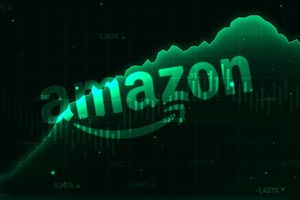
Despite whispers of slowing economic growth, the United States economy is demonstrating remarkable resilience, leading many analysts to dismiss the immediate threat of a recession. A confluence of robust corporate earnings, historically low unemployment rates, the lingering effects of past tax cuts, and supportive fiscal policies are creating a sturdy bulwark against a significant downturn. This unexpected strength suggests that rather than a sharp contraction, the nation is more likely headed for a "soft landing," where inflation cools and growth moderates without triggering a full-blown economic crisis.
The prevailing sentiment among economists and investors is one of cautious optimism, as key economic indicators continue to paint a picture of underlying health. This scenario has significant implications for financial markets, potentially sustaining equity valuations and influencing the Federal Reserve's monetary policy decisions in the coming months.
The Unyielding Pillars: Why a Recession Remains Unlikely
The current economic landscape is characterized by several powerful forces that are collectively mitigating recessionary pressures. Foremost among these are the surprisingly strong corporate earnings reports. While global consensus growth has seen a slight dip, many companies, particularly within the technology and communication services sectors, have consistently exceeded earnings expectations. This financial robustness allows businesses to continue investing, innovating, and maintaining employment levels, acting as a vital shock absorber against economic headwinds. High forward margins further underscore the health of these enterprises, providing a solid foundation for market multiples.
Complementing this corporate strength is a persistently tight labor market. The U.S. has enjoyed a period of solid job and wage growth, with the unemployment rate hovering near historic lows. This robust employment picture is fundamentally inconsistent with the typical onset of a recession, as healthy job creation fuels consumer spending and overall economic activity. While there have been isolated reports of moderating job growth, the overarching trend remains one of a resilient labor force, with some economists even contemplating the unusual prospect of a "full-employment recession" – a scenario where joblessness remains low even if growth stalls.
Furthermore, the impact of past and potential tax cuts cannot be overstated. The "sweeping multi-trillion-dollar fiscal tax breaks," such as the Tax Cuts and Jobs Act (TCJA) of 2017, have demonstrably boosted economic output in the short term. By increasing after-tax income for households and enhancing investment incentives for firms, these measures stimulate demand and encourage production. While the effectiveness of tax cuts can be modest, especially during periods of low unemployment, their contribution to overall economic momentum is a significant factor in reducing recession probabilities.
Finally, supportive fiscal policies continue to play a crucial role. The U.S. is anticipated to adopt an "easier fiscal policy stance" for the 2026 financial year, with current policy seemingly aimed at "turbocharging the economy" to address mounting debt issues. Past stimulus measures have infused substantial cash into balance sheets, which in turn has bolstered financial conditions and consumer spending. This ongoing or anticipated governmental support helps to maintain aggregate demand and stability, thereby reducing the likelihood of a sharp economic contraction. The combination of these factors paints a picture of an economy that, while perhaps slowing, possesses deep-seated strengths that are actively fending off a recession.
Navigating the Currents: Winners and Losers in a Resilient Economy
In an economic environment characterized by resilience and a potential soft landing, certain sectors and companies are poised to thrive, while others may face more nuanced challenges. The continued strength in corporate earnings, particularly in technology and communication services, suggests that companies like Apple (NASDAQ: AAPL), Microsoft (NASDAQ: MSFT), and Alphabet (NASDAQ: GOOGL) could continue to be "winners." Their robust balance sheets, innovative product pipelines, and ability to generate strong cash flows position them well to navigate any economic moderation. Furthermore, the low unemployment rate and steady wage growth translate into sustained consumer spending, benefiting consumer discretionary companies such as Amazon (NASDAQ: AMZN) and various retail chains, as households maintain purchasing power.
The anticipated interest rate cuts by the Federal Reserve, potentially starting in December, would further bolster rate-sensitive sectors. The housing market, for instance, could see renewed activity, benefiting homebuilders like D.R. Horton (NYSE: DHI) and mortgage lenders. Similarly, sectors reliant on consumer credit, such as auto manufacturers and financial institutions, could experience increased demand as borrowing becomes more affordable.
However, not all entities will experience uniform benefits. Companies heavily reliant on aggressive growth strategies that require significant capital expenditure might face challenges if access to capital tightens, even with rate cuts, or if investor sentiment shifts towards more conservative valuations. Furthermore, while overall inflation is cooling, specific sectors might still grapple with elevated input costs or supply chain disruptions, squeezing profit margins. Businesses with high debt loads could also face pressure, even with lower interest rates, if their revenue growth doesn't keep pace.
The "full-employment recession" scenario, while unlikely to be a traditional downturn, could still present challenges for businesses that rely on a constant influx of new labor or those that struggle with wage inflation. Small and medium-sized enterprises (SMEs) might find it harder to compete for talent against larger corporations, potentially impacting their growth trajectories. Overall, companies with strong fundamentals, adaptable business models, and a focus on efficiency are best positioned to capitalize on the current economic resilience, while those with weaker balance sheets or less flexible operations may need to strategically adjust to the evolving landscape.
Broader Implications and Industry Shifts: A New Economic Equilibrium
The current economic narrative of resilience amidst slowing growth fits into a broader trend of a post-pandemic rebalancing, where supply chains are normalizing, and consumer demand is shifting from goods back towards services. This rebalancing act, coupled with the factors preventing a recession, suggests a move towards a new economic equilibrium rather than a sharp downturn. Industries that have successfully adapted to these shifts, such as travel and leisure, are likely to continue their recovery, while those that over-expanded during the goods-heavy pandemic boom might face a period of consolidation.
The potential ripple effects extend across various sectors. For instance, the continued strength in the labor market, while positive for consumer spending, could also lead to persistent wage inflation in certain industries, prompting companies to invest more in automation and efficiency to manage labor costs. This could accelerate the adoption of AI and robotics across manufacturing, logistics, and even service industries, creating new opportunities for technology providers but also potentially displacing some jobs. Competitors and partners within supply chains will need to adapt to these evolving dynamics, fostering greater collaboration and diversification to enhance resilience.
From a regulatory and policy standpoint, the current environment provides the Federal Reserve with more flexibility. With a "soft landing" appearing increasingly likely, the pressure to aggressively cut rates to avert a recession diminishes, allowing the Fed to be more measured in its approach to monetary policy. This could mean a more gradual easing cycle, which might be beneficial for long-term stability but could also temper the enthusiasm of investors hoping for rapid rate reductions. Furthermore, the ongoing debate around fiscal policy, particularly regarding government spending and potential future tax reforms, will continue to shape the economic landscape, influencing investment decisions and corporate strategies.
Historically, periods of economic rebalancing without a full recession are less common but not unprecedented. They often involve a recalibration of market expectations and a shift in investment priorities. Unlike the sharp, demand-driven recessions of the past, the current scenario is more about a controlled deceleration, allowing businesses and consumers to adjust. This contrasts sharply with the rapid contractions seen during the 2008 financial crisis or the initial phase of the COVID-19 pandemic, where external shocks triggered immediate and severe downturns. The current situation, characterized by underlying strength and proactive policy measures, suggests a more managed transition.
The Road Ahead: Navigating a Soft Landing
Looking ahead, the immediate future of the U.S. economy appears to be one of continued, albeit slower, growth, with a "soft landing" becoming the most probable scenario. In the short term, market participants will closely watch the Federal Reserve's actions regarding interest rates. The anticipated rate cuts, potentially commencing in December, are expected to provide further impetus to economic activity, particularly in rate-sensitive sectors. This could lead to continued strength in equity markets, especially for companies with robust earnings and strong balance sheets. However, investors should also be mindful of potential volatility as the market digests each new piece of economic data and Fed commentary.
In the long term, the economy's ability to sustain growth without triggering inflationary pressures will be key. This will require a delicate balance of fiscal and monetary policies. Businesses will need to strategically pivot and adapt to an environment where growth is present but perhaps not as rapid as in previous boom cycles. This could involve a greater focus on efficiency, innovation, and targeted investments rather than broad expansion. Companies that can leverage technology to enhance productivity and reduce costs will likely emerge as leaders.
Market opportunities may emerge in sectors that benefit from demographic shifts, technological advancements, and sustainable practices. For instance, the aging population could drive demand in healthcare and related services, while the ongoing energy transition could create significant opportunities in renewable energy and green technologies. Challenges will include managing persistent inflationary pressures in specific areas, navigating geopolitical uncertainties, and adapting to evolving consumer preferences. Potential scenarios range from a perfectly executed soft landing, leading to sustained moderate growth, to a more prolonged period of "sub-par growth" if external shocks or policy missteps occur.
Investors should prepare for an environment where stock picking becomes increasingly important, as broad market gains may be less uniform. Companies with strong competitive advantages, resilient business models, and a clear path to profitability will likely outperform. The focus should shift from simply riding the tide of overall economic expansion to identifying specific companies that are well-positioned to thrive in a more nuanced growth environment.
Conclusion: A Resilient Economy Charts a Steady Course
In summary, the prevailing narrative of the U.S. economy is one of remarkable resilience, effectively fending off recessionary fears despite some signs of moderating growth. The confluence of strong corporate earnings, a robust labor market characterized by low unemployment, the stimulative effects of past tax cuts, and supportive fiscal policies has created a formidable defense against a significant economic downturn. This collective strength points towards a "soft landing," where the economy cools without contracting, allowing for a more stable and sustainable growth trajectory.
Moving forward, the market is likely to remain influenced by these underlying strengths, with a continued focus on corporate profitability and consumer spending. Investors should closely monitor the Federal Reserve's interest rate decisions, as these will play a crucial role in shaping borrowing costs and investment incentives. While the immediate threat of a recession appears to have receded, vigilance remains paramount. Investors should watch for any shifts in consumer confidence, unexpected inflationary pressures, or significant geopolitical developments that could alter the current trajectory. The lasting impact of this period of resilience could be a more mature and balanced economic cycle, where sustainable growth takes precedence over rapid expansion, offering both opportunities and challenges for astute market participants.







